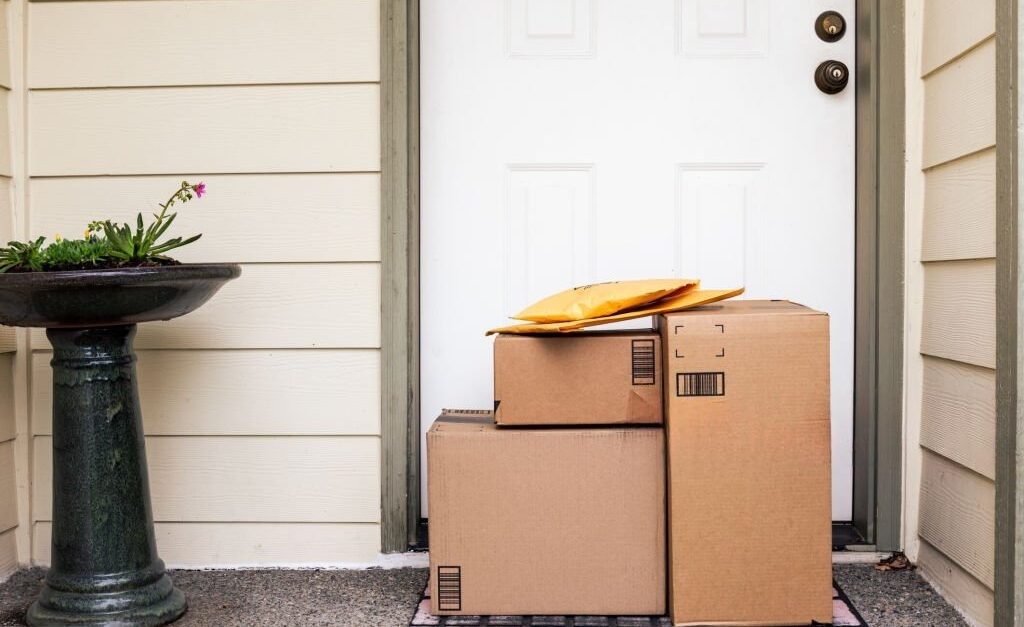
Are you planning to import furniture, décor, or appliances to Saudi Arabia but confused about HS Codes, SASO certification, or customs duties?
You’re not alone. Every month, hundreds of importers face shipment delays, reclassification issues, or even re-export orders simply because of incorrect HS code usage.
This in-depth guide from Palm Horizon KSA — a leading logistics company in Saudi Arabia — explains everything about Furniture & Household Goods HS Codes, certification requirements, and duty structures. Whether you deal in wooden furniture, mattresses, or home appliances, this resource will help you navigate the import process seamlessly.
Understanding HS Codes in Saudi Arabia
HS Codes (Harmonized System Codes) are globally recognized product classification numbers developed by the World Customs Organization (WCO).
In Saudi Arabia, they are implemented through the Zakat, Tax, and Customs Authority (ZATCA) and play a crucial role in:
- Determining customs duty and VAT
- Ensuring SASO/SABER certification compliance
- Streamlining AEO (Authorized Economic Operator) processes
- Enabling accurate trade statistics and product traceability
For furniture and household goods, the main HS code ranges are Chapters 44, 94, 95, 84, and 85 — covering everything from raw wood materials to finished home appliances.
1. HS Codes for Furniture in Saudi Arabia
A. Wooden Furniture (Chapter 94)
| Product | HS Code | Description |
| Wooden seats (upholstered) | 9401.61.00 | Upholstered seats with wooden frames |
| Wooden chairs | 9401.69.00 | Non-upholstered wooden chairs |
| Office wooden furniture | 9403.30.00 | Desks, cabinets, tables for offices |
| Bedroom wooden furniture | 9403.50.00 | Dressers, nightstands, wardrobes |
| Kitchen wooden furniture | 9403.40.00 | Kitchen and dining room fittings |
| Other wooden furniture | 9403.60.00 | Bookcases, TV stands, and multipurpose furniture |
Note: Upholstered wooden furniture often requires fire-retardant certification under SASO 2663/2019 standards.
B. Metal & Plastic Furniture
| Product | HS Code | Description |
| Metal office furniture | 9403.10.00 | Filing cabinets, office desks, lockers |
| Metal household furniture | 9403.20.00 | Beds, tables, shelving |
| Plastic furniture | 9403.70.00 | Chairs, tables, storage cabinets |
All furniture items, regardless of material, must be registered in SABER and often need SASO QM mark if they include electrical components (e.g., massage chairs or beds with lights).
C. Mattresses & Bedding (Chapter 94)
| Product | HS Code | Description |
| Mattresses of cellular rubber/plastics | 9404.21.00 | Without metal springs |
| Mattresses with springs | 9404.29.00 | Inner-spring or hybrid models |
| Sleeping bags | 9404.30.00 | Textile-filled |
| Bed linens & pillows | 9404.90.00 | Including cushions, comforters |
These products must pass flammability tests and include labeling in Arabic, showing material composition and country of origin.
2. HS Codes for Home Décor & Accessories
| Product | HS Code | Description |
| Table lamps | 9405.20.00 | Electrical lighting for tables/desks |
| Chandeliers | 9405.10.00 | Ceiling and wall lighting |
| Mirrors | 7009.92.00 | Glass mirrors, framed or unframed |
| Picture frames | 4414.00.00 | Wooden or plastic frames |
| Candles & holders | 3406.00.00 | Decorative or scented candles |
| Clocks & wall décor | 9105.21.00 | Wall clocks and decorative items |
| Rugs and carpets | 5702.42.00 | Woven carpets and mats |
| Ceramic decorative items | 6913.90.00 | Vases, figurines, and ornaments |
Most décor items fall under SABER low-risk category, but must still meet labeling and safety requirements.
3. HS Codes for Home Appliances
| Product | HS Code | Description |
| Refrigerators | 8418.10.00 | Household type |
| Washing machines | 8450.11.00 | Fully automatic |
| Microwave ovens | 8516.50.00 | Domestic type |
| Vacuum cleaners | 8508.11.00 | Upright or handheld |
| Air conditioners | 8415.10.00 | Window or wall type |
| Electric irons | 8516.40.00 | Steam or dry |
| Coffee makers | 8516.71.00 | Electrical brewing appliances |
| Hair dryers | 8516.31.00 | Personal electrical appliances |
All appliances require Energy Efficiency Labeling (EER) and SASO Quality Mark (QM) to enter the Saudi market.
4. HS Codes for Raw Wood & Semi-Finished Goods
| Product | HS Code | Description |
| Rough sawn wood | 4407.10.00 | Non-planed, non-sanded |
| Veneer sheets | 4408.39.00 | Less than 6 mm thickness |
| Plywood | 4412.33.00 | Layers of wood glued together |
| MDF boards | 4411.12.00 | Medium-density fibreboard |
| Particle boards | 4410.12.00 | Chip-based panels |
| Wooden frames | 4414.00.00 | For paintings, mirrors, etc. |
These require phytosanitary certificates to confirm freedom from pests before export to Saudi Arabia.
5. Duties & Tariffs in Saudi Arabia
| Category | Duty Rate | Key Notes |
| Raw wood | 5% | Encourages local finishing |
| Semi-finished goods | 10% | Medium processing level |
| Finished furniture | 15% | Higher duty to protect local industries |
| Home décor | 8% | Standard import rate |
| Electrical appliances | 12% | Includes energy-efficiency compliance cost |
Saudi Arabia’s Vision 2030 promotes local manufacturing, hence higher duties for finished furniture to stimulate domestic production.
Saudi Arabia Certification & Labeling Rules
SASO/SABER Certification Overview:
- SABER Platform: Digital system for product registration and shipment certificates.
- SASO Quality Mark (QM): Needed for electrical and mechanical goods.
- Energy Efficiency Label (EER): Mandatory for all major appliances.
- Fire Safety Certification: Needed for mattresses and upholstered furniture.
- Arabic Labeling: Must show country of origin, brand, material, and care symbols.
Without these, customs clearance is impossible, even if duties are paid.
Implementation Roadmap (Step-by-Step)
Here’s how to design, plan, and execute your furniture & household goods import into KSA with minimal friction:
- Product Profiling & Materials Analysis
- Determine dominant material (wood, metal, textile, composite)
- List all components (frame, cushions, wires, foam)
- Conduct internal classification exercise
- Determine dominant material (wood, metal, textile, composite)
- HS Code Assignment & Classification Justification
- Map your product to a 6-digit WCO HS chapter
- Extend to Saudi local variant (8–10 digits), following ZATCA rules
- Document rationale (weight share, function, dominant material)
- Map your product to a 6-digit WCO HS chapter
- Regulatory Compliance Checklist
- SABER registration: Conformity certificate for every product
- SASO QM / Safety / Electrical: For appliances & “regulated goods”
- Fire Safety, Chemical Testing: For upholstery, foam, adhesives
- Labeling: Arabic & English, origin, warnings, product specs
- SABER registration: Conformity certificate for every product
- Pre-Shipment Testing & Certification
- Use accredited labs to test flame retardancy, VOC, electrical safety
- Obtain conformity assessment and certification before dispatch
- Use accredited labs to test flame retardancy, VOC, electrical safety
- Prepare Import Documentation
- Commercial Invoice, Packing List
- Certificate of Origin
- Conformity Certificate / SASO / SABER
- Test reports, material composition declarations
- Commercial Invoice, Packing List
- Customs Declaration & Submission
- Submit electronically to ZATCA with accurate HS code
- Attach SASO / QM certificate references
- Pay duty + VAT
- Submit electronically to ZATCA with accurate HS code
- Inspection & Clearance
- Some shipments will be flagged for physical inspection
- Customs may open and inspect labeling, materials, fire tags
- Once passed, goods move to domestic delivery
- Some shipments will be flagged for physical inspection
- Local Delivery & Post-clearance Compliance
- Ensure labels remain intact till retail delivery
- Maintain scheme for audit readiness
- Track usage, complaint management, recall bits
- Ensure labels remain intact till retail delivery
Palm Horizon can act as your end-to-end partner, from classification, certification, customs clearance, warehousing, and last-mile delivery.
Use Cases, Industries & Real-World Applications
Let’s ground this in real operations to show how classification, compliance, and costs impact business decisions.
1: Importing Ready-To-Assemble Wooden Furniture
A retailer in Riyadh orders flat-pack wooden cabinets from abroad:
- Product arrives in disassembled panels (semi-finished)
- HS code likely 4412.xx (composite wood panels) or 9403.60 if already shaped
- Duty is modest; but must secure SABER conformity before shipping
- Label in Arabic + English, country of origin, warning tags
- Palm Horizon ensures registration, classification, and final delivery
2: Importing Upholstered Sofas & Mattresses for Hotel Chains
- Mattresses: HS 9404.21 or related
- Sofas with padding: while wood frame might fall under 9403.x, upholstery components, flame retardant foam, fabric must comply with fire safety and chemical limits
- SASO mandates flame retardancy, phthalate limits, Odor / VOC testing
- Labeling must include “not fire-retardant” or fire class rating in Arabic
- Potential inspection at customs; with mislabeling, rejection is likely
3: Home Décor & Lighting Import
- Wall mirrors, lighting fixtures, decorative vases
- HS codes like 9405.10 (lamps), or 8306.xx (ornamental metalware)
- Must declare correct wattage, electrical safety (for lamps), luminous flux
- SABER / SASO registration needed
- Duty depends on material mix (glass, metal, plastic)
4: Appliances & Fixtures for Residential Projects
- Air conditioners, kitchen hoods, water heaters
- HS codes in Chapter 85 (e.g. 8516)
- Must comply with SASO Energy Efficiency Label (EEL) and IEC electrical safety standards
- Sometimes subject to Saudi Eco-label / energy efficiency programs
- Documented test reports required
Industrial Use: Furniture Manufacturers Importing Raw Material
- Importers importing wood cuttings, MDF, laminates, veneers
- HS under Chapter 44
- Lower duty, but require phytosanitary certificate, fumigation certificates
- Local manufacturer uses them to produce finished furniture for local sale
Real-World Applications & Industry Use Cases
- Hospitality sector: Importing custom-made furniture for hotels and resorts.
- E-commerce brands: Sourcing ready-to-assemble kits.
- Retail chains: Importing mattresses, chairs, and home décor for showrooms.
- Developers & contractors: Sourcing raw wood, doors, and fittings for construction projects.
- Manufacturers: Bringing in MDF and veneer for localized production.
Why HS Codes Are Critical for AEO and Compliance
Using the wrong HS Code can result in:
- Customs rejection or fines
- Delayed SASO validation
- Incorrect duty calculation
- Suspension of AEO privileges
Palm Horizon’s import specialists ensure all shipments meet AEO and SASO standards, classifying products correctly across 94xx and 44xx HS chapters.
FAQs
Q1: What is the maximum HS code (highest tariff bound) for furniture in Saudi Arabia?
A: Under Saudi Arabia’s WTO commitments, the maximum bound tariff on non-agricultural goods is often 25 % for many HS lines. However, the applied duty on furniture items seldom reaches that bound, typically staying in the 5–15 % range depending on category and material.
Q2: If I import wooden furniture with metal accents, how do I choose HS code?
A: Use the principle of predominant material or function. If wood constitutes over 50 % of value/weight or is the structural core, classify under 9403.60 (wood furniture). If metal is dominant, 9403.20 may apply. Document the breakdown.
Q3: Do all furniture imports require SASO / SABER?
A: Yes. All articles under regulated chapters like wood furniture, upholstery, lighting, and appliances must be registered in SABER. Without a valid conformity certificate, the load can be held or rejected at customs.
Q4: What fire-safety standard applies to upholstery and mattresses?
A: SASO enforces fire retardancy or flammability limits for upholstered furniture and mattresses. The materials (foam, fabric) must pass lab tests. Labeling must include fire class or warning in Arabic. Some test bodies must be internationally accredited.
Q5: Can I benefit from lower duty by importing semi-finished components rather than finished furniture?
A: Yes. Importing raw wood, veneers, or panels under lower duty chapters can reduce cost. Then finalize manufacturing or assembly in Saudi. This approach is used frequently by large importers to optimize total landed cost.
Q6 (bonus): What is the typical HS code for wooden household furniture used in Saudi trade?
A: One of the most commonly observed HS codes is 9403600000 (wooden household furniture) in import records.
Conclusion: Streamline Your Furniture Imports with Palm Horizon KSA
Furniture imports to Saudi Arabia can be profitable — but only with correct HS classification, SASO/SABER certification, and customs compliance.
Partnering with Palm Horizon KSA gives importers a trusted logistics ally who manages the entire process — from HS code verification to on-ground delivery.
Simplify documentation, reduce clearance delays, and ensure your furniture and home goods reach Saudi buyers fast — fully compliant, certified, and ready for sale.





